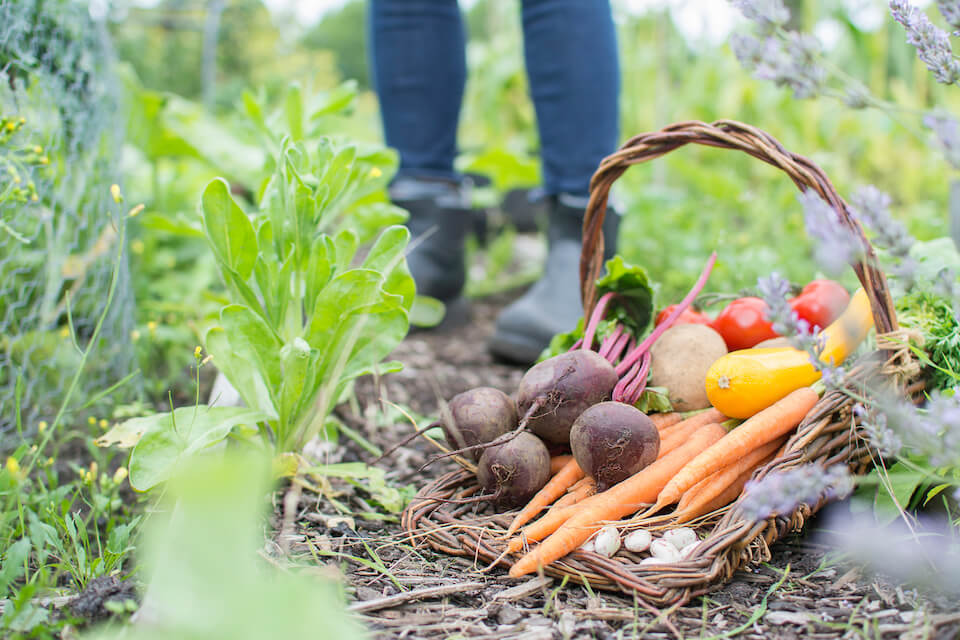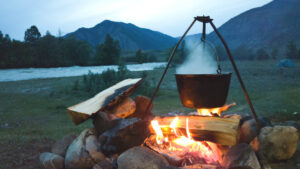
Growing your own crops is one of the best ways to remain self-sustaining and prepared for a crisis. When an emergency happens, you don’t want to rely on anyone else to ensure your family has delicious, nutritious food to eat.
Before you get started, however, you’ll want to make sure you’re investing in the best crops. Get to know your growing zone and plant these nine best crops to grow in your garden.
1. Beans
Beans are one of the best crops to add to your survival garden. Not only do they grow quickly, easily, and in dry climates, but beans are full of nutrients, fiber, and protein. Beans are best grown in the spring but could last you throughout the year. Depending on which variety you grow, this versatile crop can be canned, dehydrated, pickled, or eaten raw.
Beans offer more than nutritional benefits, too. Growing beans can also improve your soil conditions, which can help boost your other crops.
There are two types of beans to consider growing: bush beans and pole beans. As the name suggests, bush beans grow into compact bush-like plants. Bush beans are fast-growing (reaching a maximum height of two feet tall) and will produce beans over multiple weeks — making them great for freezing, pickling, dehydrating, or canning. Pole beans get their name because they need to climb upward to grow. Therefore, you’ll want to plant pole beans next to rods or lattices. Pole bean varieties will take a little longer to grow and you may need to start them indoors, depending on your growing zone.
2. Lentils
Experienced gardeners or protein-conscious survivalists should consider growing lentils. Like beans, lentils are packed with protein, store well, and can be used in multiple ways — from soups to flours.
Lentils are most commonly grown in the spring. They can grow in many soil types and tolerate the cold well. However, you may want to start them indoors once the soil has warmed up. Once planted outdoors, your lentil seedlings will grow into low, bushy plants and begin to produce pods.
3. Squashes
Squash is easy to grow, store, and cook. Squash is rich in filling fiber and essential vitamins, making it one of the most important plants for survival. Squash can be grilled, baked, canned, or even turned into pies and pastes.
There are two families of squash to consider growing: summer squash and winter squash. Summer squash varieties include zucchini, cousa, pattypan, and tromboncino. Winter squash varieties include pumpkins, butternut squash, acorn squash, and spaghetti squash.
While each squash variety varies, most grow well on hills or mounds and prefer to have space to either sprawl outward or upward. So, ensure you leave plenty of space around your squash plants!
4. Corn
If you have the space, consider growing corn in your emergency garden! Corn is filling and relatively easy to grow — not to mention you can cook it on the cob, turn it into flour, or use it in soups.
Corn does require a sizeable growing space. You’ll need a 10×10 area in your garden or more to yield the best results. Growing corn also requires a little patience! Corn is typically planted two to three weeks after the last spring frost and begins to yield results anywhere from 60 to 100 days later.
While growing corn does require plenty of space and time, even the pickiest eaters can agree the results are delicious.
5. Lettuces
From salads to wraps, there are plenty of delicious things you can cook up with lettuces grown from your garden. Five varieties tend to grow well in home gardens, including butterhead lettuce, summer crisp lettuce, iceberg lettuce, looseleaf lettuces, and romaine lettuce.
Lettuce is generally a cool-weather crop and grows best in spring and fall. You should plant lettuce seeds about a quarter-inch deep in the soil, but be sure to space your seeds according to your variety!
6. Tomatoes and Peppers
Even city dwellers can enjoy the benefits of growing their own tomatoes and peppers. Tomatoes and peppers are packed with vitamins and can add flavor to any dish. Both are great for eating alone or making pastes, sauces, or bases for soups and chilis.
These fast-growing and flavor-packed vine plants don’t take up much space and can be grown either in pots or directly in soil.
Both tomatoes and peppers need plenty of sunshine, so aim to plant them in an area that will receive 6-8 hours of sunlight every day.
7. Root Vegetables
Some of the best survival garden plants grow underground. Common root vegetables — think carrots, beets, potatoes, yams, and onions — are high in calories and full of flavor, fiber, and important nutrients. Root veggies also store and cook incredibly well.
Most root vegetables are low-maintenance and grow best in cool months and direct sunlight. However, sweet potatoes, onions, and garlic are an exception. Sweet potatoes thrive in long, hot summers, while onions and garlic can be planted in fall and harvested in spring.
8. Berries
Are you craving something sweet in your survival garden? Grow some berries. Strawberries, blueberries, blackberries, and raspberries are beautiful additions to your survival garden. Berries can be eaten fresh, canned, dehydrated, or turned into jam or jelly.
Best of all, the berry growing season spans all summer long. Strawberries are harvested in the spring, while blueberries, huckleberries, and raspberries are ripe and ready to be harvested by early summer. Blackberries and raspberries are typically ready towards the end of summer and early fall.
9. Herbs
Last but not least, carve out some space for a survival herb garden. Basil, cilantro, garlic, and mint can add flavor to any meal. Plus, these medicinal plants have other benefits! While most herbs grow best in the springtime, you can also grow herbs indoors. Simply start your seedlings, transplant them into mason jars, and place them in the window. You’ll soon have plenty of tasty, fresh herbs at your disposal.
Stay Fed In a Crisis with Survival Food
Growing your own food is a great way to become more self-sufficient, but fresh produce will only get you so far in a crisis. Make sure your family is ready for any emergency by stocking up on nutritious survival food from 4Patriots.
Shop our selection of gardening tools, seeds, survival gear, and survival food online today and stay prepared for whatever lies ahead.

